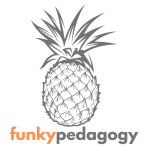Introductions and conclusions always seem like quite abstract things, threatening to book end an essay with vague statements and ‘summing up’. However, done right, an introduction serves as the perfect vanguard of a well crafted argument.
There are tons of different ways to teach introduction writing, but the most successful in my experience is ‘Discuss, Define, Refine’ (DDR). Here is a brief outline:
Discuss: Introduce the key terms of the question, showing that you are fully aware of the given theme/issue/area. Often constitutes a simple re-wording of the question. e.g. “Madness is a topic which clearly fascinates writers across all of literature.”
Define: Define the key terms in the question, showing that you appreciate a range of ways to interpret the topic. e.g. “‘Madness’ could refer to a range of human emotion and conditions, such as the brief madness caused by grief, the intoxicating madness of love, or the tragic madness of severe mental illness.”
Refine: State clearly how YOU are interpreting the question/terms for this particular essay, bringing the question to your specific text(s). Ensure that the final sentence of the introduction firmly establishes your key argument. e.g. “Perhaps the most significant presentation of madness in literature is that of King Lear as he succumbs to old age, confusion, anger and dementia, destroying his family and, for a time, losing his humanity. In Lear, Shakespeare presents a king who loses his mind, his country and his children; this is not a play about greed or evil, but about a frail and vulnerable man in the throes of mental instability.”
This structure effectively ensures that students begin with a very wide concept, and then narrow this concept down to their own specific argument. I use an upside-down triangle to show my students how this works:
The other very pleasing thing about the triangle shape is that we could see it as an arrow, literally pointing towards the rest of the essay…
The resource below is a writing frame using the triangle/chevron shape, which students can use to plan their introduction. The shape is really helpful in emphasising the fact that students have to start in general terms, and gradually become more specific, ending in a final, very clear, narrow focus for their argument.
The finished introduction is here:
“How do writers present male dominance in Victorian literature? Consider one prose and one drama text.
Male dominance pervades Victorian literature in everything from plot to setting to characterization. The writing community itself was almost all male, with only a handful of notable female writers to create any sense of balance. Male dominance could refer to depictions of powerful men and domestic hierarchies which were typical of the period. It could also refer to the way in which masculinity and misogyny are ingrained in the very fabric of novels, plays and poetry. The most potent example of male dominance in these texts is the very real and oppressive way in which characters such as Torvald Helmer and Lord Henry control and manipulate those around them. These writers present their male oppressors as villains who exemplify all that is wrong in a male dominated society.”
I’d be really interested to hear other A Level intro structures you have used or developed @FunkyPedagogy
My next post on the A Level Literature Ideas series will be on essay planning…




